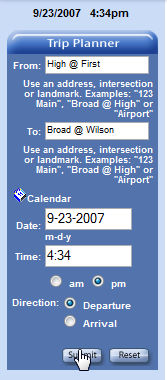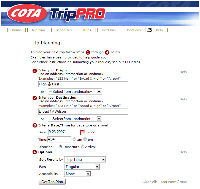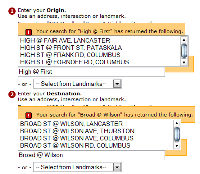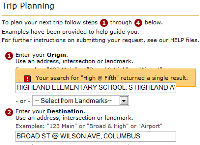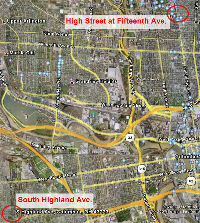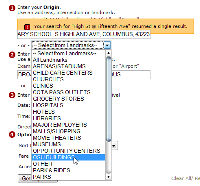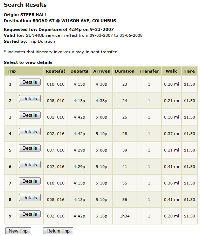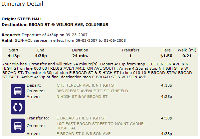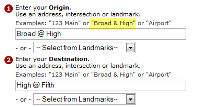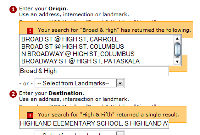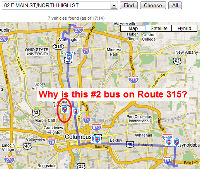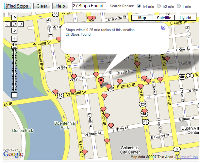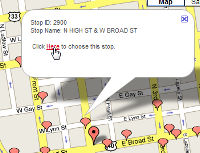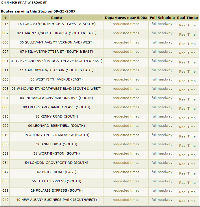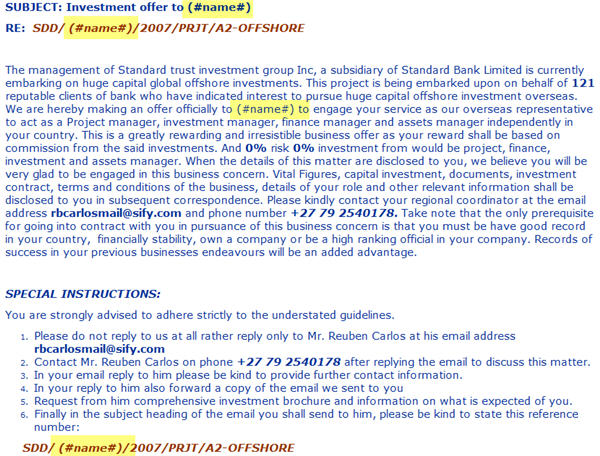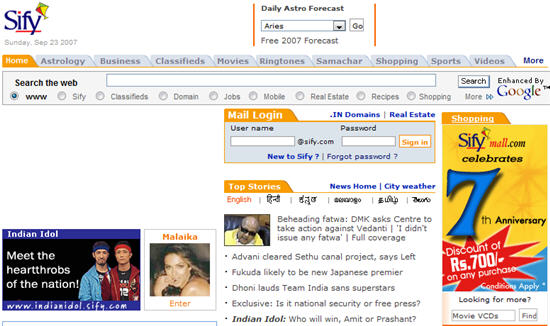|
|||||||||||||||||||||||||||||||||||||||||||||||||||||||||||||||||||||||||||||||||||||
| Previous page | Do you use a pop-up blocker? If so, please read this. | ||||||||||||||||||||||||||||||||||||||||||||||||||||||||||||||||||||||||||||||||||||
|
|||||||||||||||||||||||||||||||||||||||||||||||||||||||||||||||||||||||||||||||||||||
| Show Date: 2007.09.30 | |||||||||||||||||||||||||||||||||||||||||||||||||||||||||||||||||||||||||||||||||||||
Revisiting King TUT: The Ultimate TroubleshooterStart your computer and you'll find that several additional processes (maybe dozens of them) also start. You can see these if you press Ctrl-Alt-Del and use the Task Manager to examine the Processes tab. You'll figure out what some of the processes are by their names, but some will have names that not even a mother could love. Task Manager doesn't give you a lot of information about those processes, though. That's where TUT comes in. I liked version 3 of this $30 application and version 4 raises the bar a bit. It's from AnswersThatWork.com, a British firm that's not afraid to tell you what it thinks about the processes it finds. Regarding Apple's QuickTime, which gets installed whenever Itunes is installed or updated and which insists on installing its "instant load" feature that does little more than slow the machine overall to provide imperceptibly faster loading of QuickTime content, TUT says: TUT uses a tabbed interface to display information about your computer — tasks, services, and programs with an explanation of what they do and whether you should allow them to live.
The Ultimate Troubleshooter is a good way to find out what's running on your computer and to get rid of the processes that shouldn't be running. TUT is an easy way to find out what's bugging your computer.
The Ultimate Troubleshooter will let you streamline your PC for speed and stability. It's a surprisingly robust application for the price. And the snarky comments just add to the charm. For more information, visit the Answers that Work website. Revisiting COTA's website: Not as bad as it seemedNot too long ago, I wrote about the Central Ohio Transit Authority's website. On the day I visited the site, few features worked. On the assumption that the problem was a temporary one, I stopped by again. There are still some rough edges, but the site offers a lot of useful information about the bus system. If COTA would take care of some serious usability problems, the site might be helpful instead of frustrating. I'm a supporter of public transit. I would use public transit to get to work in the morning if the buses were running when I go to work, the place I work was on or near a bus route, and if I could make the 20-minute trip in less than 90 minutes.
Revisiting Microsoft Windows VistaA few weeks ago, I grumbled that Vista isn't all it's cracked up to be. That was after I said that I generally liked what I was seeing. Now I'm back to generally liking what I'm seeing, but with a few concerns. If you've been following the recent saga, you know that the computer has been in the shop several times. It spent several days there this week. It's back now and it seems to be performing well. The problems that acted like hardware problems may have been device drivers that Microsoft installed to "help" me. The problems I've been wrestling with (and generally foisting onto TCR Computers) have involved black-screen crashes and blue-screen crashes. Maybe I should define those terms.
Black screens of death are followed by a warning on restart. The warning will state that Windows did not terminate normally and suggest Safe Mode and several other options. It will also recommend removing any newly installed hardware or software. It will also offer to restart the machine normally, and that's usually the best choice. If the computer starts and runs normally, you can assume that "something" happened and the abend ("abnormal end") was just a fluke. What I've seen, following a black screen of death, is a series of blue screens of death and a system that will not boot. Is this a hardware problem or something else? At first it looked like a hardware problem and TCR replaced the hard drive. Then it looked like a memory problem and TCR replaced the memory. Either or both of those components may have been faulty, but the final resolution involved updating the firmware on the motherboard, getting rid of video drives that Windows Update had ("helpfully") downloaded even though they were 4 years out of date and not certified for Vista, and updating the drivers for the audio subsystem (I thought I'd already done that). Itunes still sometimes st-st-st-st-st-stutters when playing music, but now it's nowhere near as serious as it used to be, and the problem may be related to my online backup service, Carbonite, which seems to be responsible for most of the disk thrashing. Stupid spam(mer) of the week(Imagine your name wherever you see "#YOUR NAME#" in this paragraph.) When marketers discovered mail merge and it became possible to include #YOUR NAME# in several locations throughout a direct mail letter, they overdid it, didn't they, #YOUR NAME#? Because, #YOUR NAME#, you knew that instead of making the letter appear more personal, all of this personalization was a clear tip-off that the letter was computer generated, #YOUR NAME# probably just pitched it into the trash. Now spammers have tumbled to the trick, but sometimes they're not quite bright enough to make the technology work for them. Here's an example: The spammer had intended to insert my name 4 times in this con, but wasn't quite capable of doing it. At the bottom of the spam, there was this little treat: The link is to a dead page, which attempts a redirect that I didn't allow. At best it would simply confirm to the spammer that I had seen the message, and it might do much more. If I didn't know that the country code for England is 44, I could easily have looked it up Other clear indications that it's a spam and a scam
What we have an e-mail from someone who can't write very well and who has only the most tenuous grasp of punctuation and capitalization and a utter lack of knowledge about how to use his spamming program. The message promotes a fake financial institution that claims to be in England, but directs you to call your "regional coordinator" who has a South African telephone number and an Indian e-mail address. Inspires a lot of confidence, doesn't it? Nerdly NewsVerizon decides to allow people who want messages to receive themVerizon refused to allow NARAL (an abortion rights group) to send text messages to people who had requested them, but now the company has reversed itself. Regardless of your view of abortion, right to life, or anything else dealing with the debate, you might question the decision of a "common carrier" to refuse to allow the transmission of messages to people who have requested those messages. By the end of the week, somebody at Verizon decided that the decision was stupid. A spokesperson said that the earlier decision not to permit the messages was an “isolated incident”. I would agree with Verizon if it applied the policy to unsolicited messages, but NARAL was asking for permission to send messages to people who had requested them. Verizon says the decision was an incorrect interpretation of an old policy that was designed to avoid anonymous hate messaging and adult materials sent to children. (Hello? How would any sentient human ... oh, never mind.) The messages would hardly be anonymous since they would be send only to people who had asked to receive them. Mircoogle?Microsoft has more than quadrupled the amount of material it searches on the Web ("Four times nothing is still nothing." Ah, just kidding, Bill.) Microsoft, worried about what Google has up its sleeve, says that it now better understands what people want when they conduct Internet searches and now they can deliver better and more relevant responses. Google today is the search engine used for more than half (56%) of Internet searches in the United States. Yahoo handles about 23% and Microsoft comes in at 11%. Remember when Microsoft had 11% of the browser market? Microsoft may have a better mousetrap, but now it must convince users that what it offers is better than what Google offers. In some ways, improvements at Microsoft have already been implemented at Google and Yahoo has plans to add similar features soon. |
|||||||||||||||||||||||||||||||||||||||||||||||||||||||||||||||||||||||||||||||||||||
|
|||||||||||||||||||||||||||||||||||||||||||||||||||||||||||||||||||||||||||||||||||||
| Home • Programs • Reference • Subscribe to Technology Corner News • Contact Us • Terms of Use ©2007 by William Blinn Communications. All rights reserved. |
|||||||||||||||||||||||||||||||||||||||||||||||||||||||||||||||||||||||||||||||||||||
This is the only ad you'll ever see on this site. It's for my website host, BlueHost in Orem, Utah. Over the past several years, they have proven to be honest, reliable, and progressive. If you need to host a website, please click the banner below to see what BlueHost has to offer. |
|||||||||||||||||||||||||||||||||||||||||||||||||||||||||||||||||||||||||||||||||||||

|
|||||||||||||||||||||||||||||||||||||||||||||||||||||||||||||||||||||||||||||||||||||



